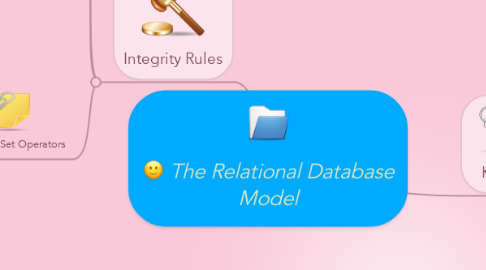
1. Keys
1.1. is one or more attributes that determine other attributes
1.2. Composite key
1.2.1. Composed of more than one attribute
1.3. Key attribute
1.3.1. Any attribute that is part of a key
1.4. Superkey
1.4.1. Any key that uniquely identifies each row
1.5. Candidate key
1.5.1. A superkey without unnecessary attributes
1.6. null
1.6.1. No data entry
1.6.2. Not permitted in primary key
1.6.3. Should be avoided in other attributes
1.6.4. Can represent: An unknown attribute value A known, but missing, attribute value A “not applicable” condition
1.7. foreign key
1.7.1. An attribute whose values match primary key values in the related table
1.8. Referential integrity
1.8.1. FK contains a value that refers to an existing valid tuple (row) in another relation
1.9. Secondary key
1.9.1. Key used strictly for data retrieval purposes
2. Integrity Rules
2.1. entity integrity
2.1.1. all primary key entries are uinique, and no part of primary key may be null
2.1.2. each row will have unique identity, and foreign key values can properly reference primary key values
2.2. referential integrity
2.2.1. Referential integrity is a relational database concept, which states that table relationships must always be consistent. In other words, any foreign key field must agree with the primary key that is referenced by the foreign key.
2.3. Relational Set Operators
2.3.1. Relational algebra
2.3.1.1. Defines theoretical way of manipulating table contents using relational operators
2.3.1.2. Use of relational algebra operators on existing relations produces new relations:
2.3.1.2.1. select
2.3.1.2.2. project
2.3.1.2.3. union
2.3.1.2.4. intersect
2.3.1.2.5. difference
2.3.1.2.6. join
2.3.1.2.7. product
2.3.1.2.8. divide

